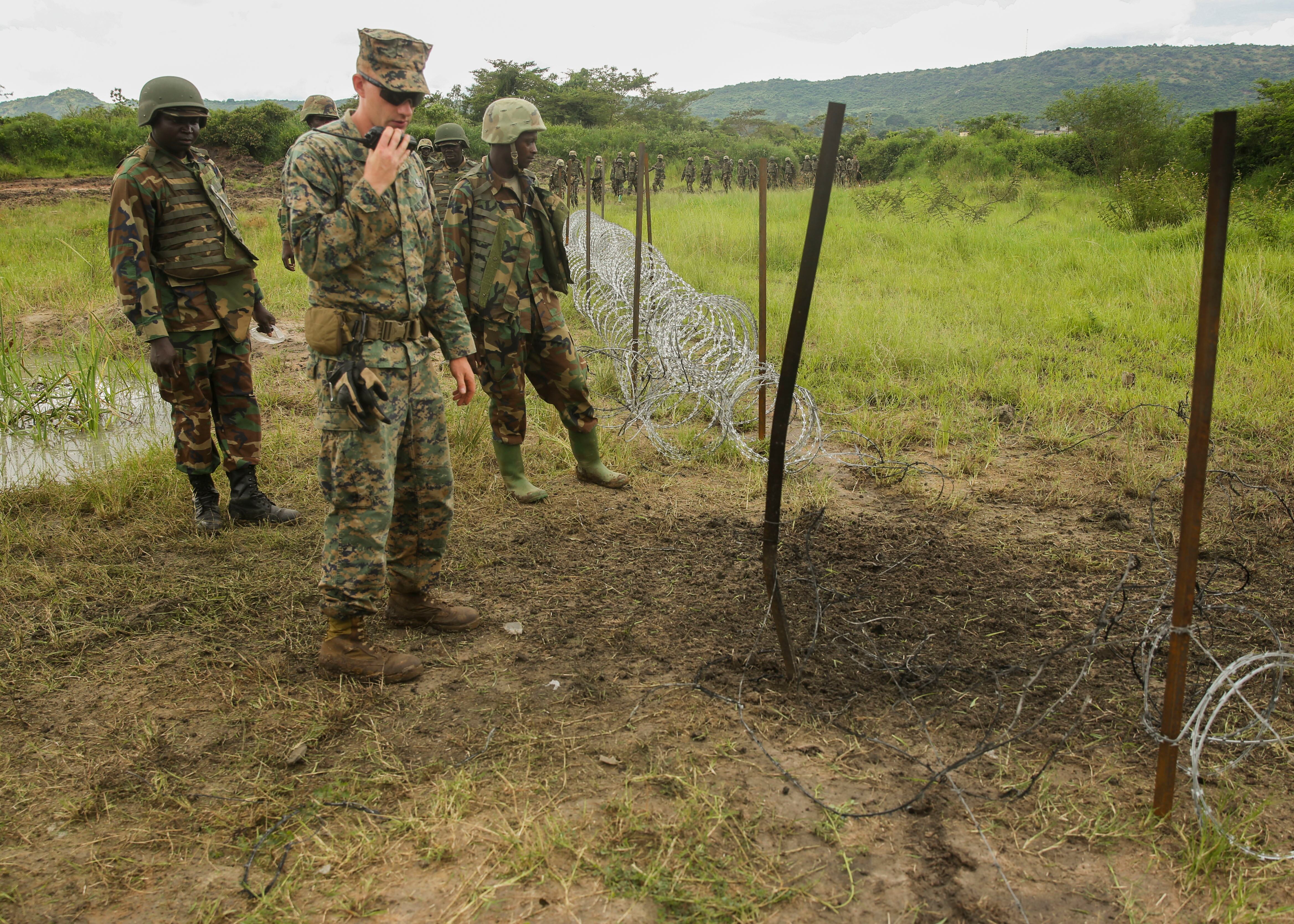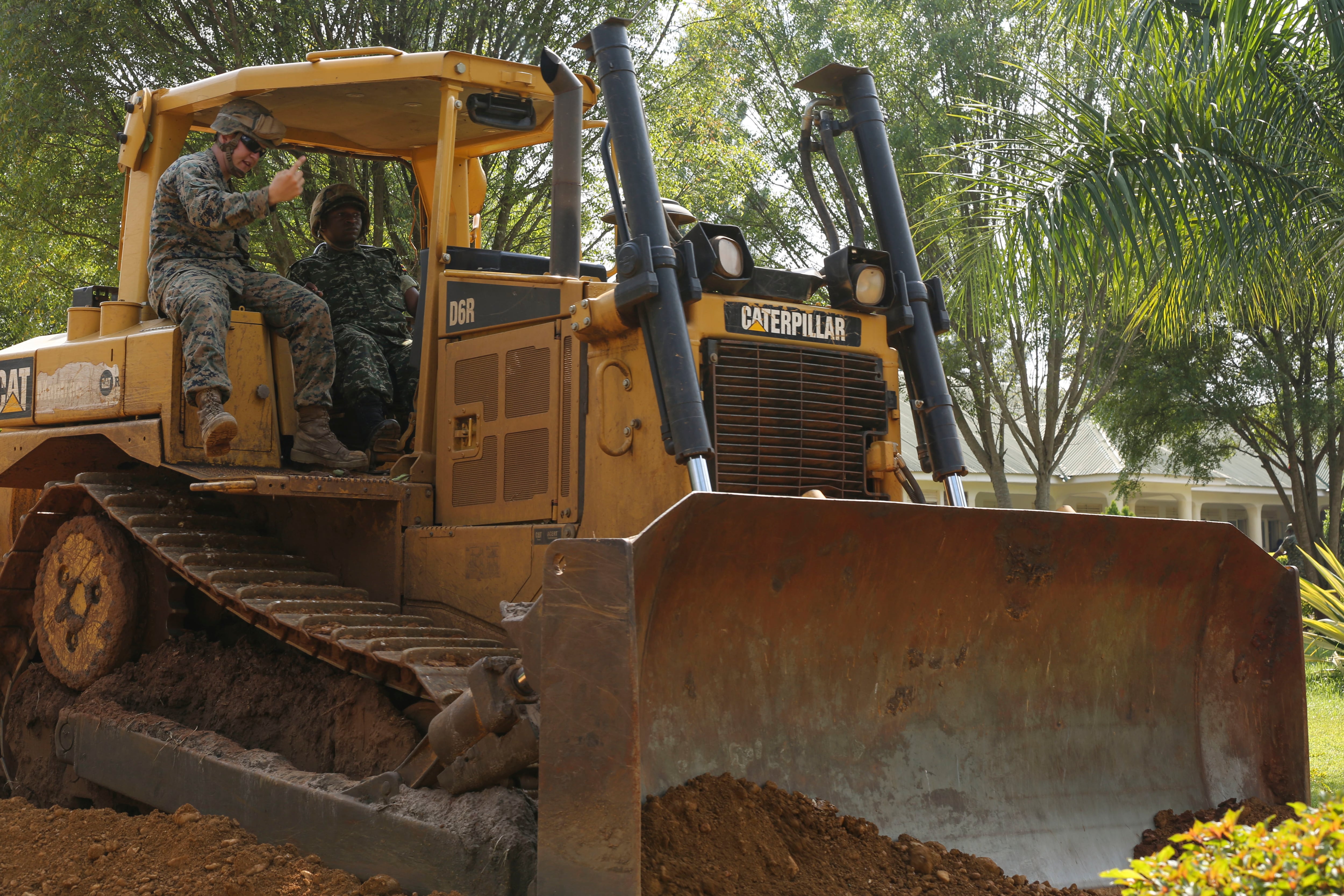The Ugandan military is now better able to take on Al-Shabaab al-Shabab militants in Somalia, courtesy of the U.S. United States Marine Corps.
Marines from Combat Logistics Battalion 6 assigned to Special-Purpose Marine Air-Ground Task Force – Crisis Response – Africa recently completed held a graduation ceremony on Friday at Camp Singo, Uganda, for soldiers of the Uganda People’s Defense Force, following completion of a two-month training program geared toward preparing Ugandans for deployment to Somalia.
It’s part of the crisis response unit's SPMAGTF—CR—AF’s ongoing theater security cooperation mission to provide rigorous training in an array of skills critical to the fight against the terror group allied with the Islamic State group -allied affiliate, including combat lifesaving skills, improvised explosive device identification and reaction, heavy equipment and engineering operations, communications, as well as maintenance and driving of Mine-Resistant, Ambushed-Protected (MRAP) vehicles .
The Marines also provided the Ugandans with hands-on training in explosive ordnance — C4 and TNT — to breach urban obstacles: blasting a path through walls, locked doors, berms or concertina wire for follow-on assault.
This was all new for the Ugandan privates, something they'd never done, said Marine Staff Sgt. Malachi McPherson, an explosive ordnance disposal technician conducting the training.
"With the short training, we didn't expect them to be experts, but they did pretty good," he said. "It's a tool that can benefit them in Somalia and gives another asset to surprise the enemy; the main thing is they'll be better assets versus a basic infantry guy."
These are assets the Ugandans can bring directly to the battlefield.
Since 2007, the Ugandan military has provided forces to the African Union Mission in Somalia, or AMISOM, the regional peacekeeping force supporting Somalia's federal government by securing key infrastructure such as airports and seaports.
The jihadist terrorist group Al-Shabaab al-Shabab, meanwhile, has waged an unrelenting insurgency against the government in its quest to establish a fundamentalist Islamist state in the war-ravaged country.
The Somali government — with AMISOM backing — pushed Al-Shabaab al-Shabab out of Mogadishu in August 2011, and last August mounted Operation Indian Ocean to clear the rest of the country of remaining pockets under the militants’ control.
The operation has been largely successful, but Al-Shabaab al-Shabab continues to strike back against the Somali government and AMISOM, increasing IED and vehicle-born IED attacks in addition to a series of high-profile terrorist attacks against civilian targets, such as the Oct. 31 complex assault on the Sahafi hHotel in Mogadishu and the attack on Garissa University College in Kenya last April that left more than 145 dead.
The uptick in IED strikes prompted the Ugandans to specifically request counter-IED training from the Marines, who instructed the UPDF soldiers in IED awareness and ran them through identification and reaction lanes.

Staff Sgt. Malachi McPherson, an explosive ordnance disposal technician with Special-Purpose Marine Air-Ground Task Force Crisis Response-Africa and Ugandan soldiers observe the efficiency of their breach on a razor-wire obstacle during a training exercise at Camp Singo.
Photo Credit: Marine Corps
Additionally, the Ugandan government recently acquired 25 MRAPs through the State Department's foreign weapons sales program for use in Somalia, according to Capt. Daniel Saraceni, the training detachment's officer in charge.
Three of these are held back in Uganda, Saraceni said, and as part of the training package, the Marines instructed the Ugandans on MRAP mechanics, primary maintenance, driving, immediate action drills and vehicle recovery.
Holding the ground gained from Al-Shabaab al-Shabab requires building out infrastructure to Somalia’s undeveloped rural heartlands, and the Marines also provided a key block of instruction in operating heavy engineering equipment to support it.

Cpl. Craig Henry, a heavy equipment operator with Special-Purpose Marine Air-Ground Task Force Crisis Response-Africa, directs a Ugandan soldier on how to use heavy equipment during a recent training exercise. The Ugandans use the equipment to build infrastructure in Somalia where they are fighting against the Al-Shabaab terror group.
Photo Credit: Cpl. Olivia McDonald/Marine Corps
They taught the Ugandans to use earth movers, bulldozers and graders to make and improve roads, said Cpl. Craig Henry, a heavy equipment operator who trained the Ugandans in operating and maintaining the vehicles.
"The equipment was new to them," he said. "They were extremely eager to learn, especially a lot of these guys from small villages, where the only engineering tools they have are shovels."
The Marines also trained instructed the Ugandans in radio communications, rendering first aid on the battlefield and establishing casualty collection points, motor transport procedures, leadership, basic marksmanship as well as providing electricity and water purification.
The program culminated in a final exercise over the last week, with the Marines integrating all of the previous training through multiple scenarios.
"They did really well," Henry said. "They took every piece of gear and did a good job of implementing what they learned."





